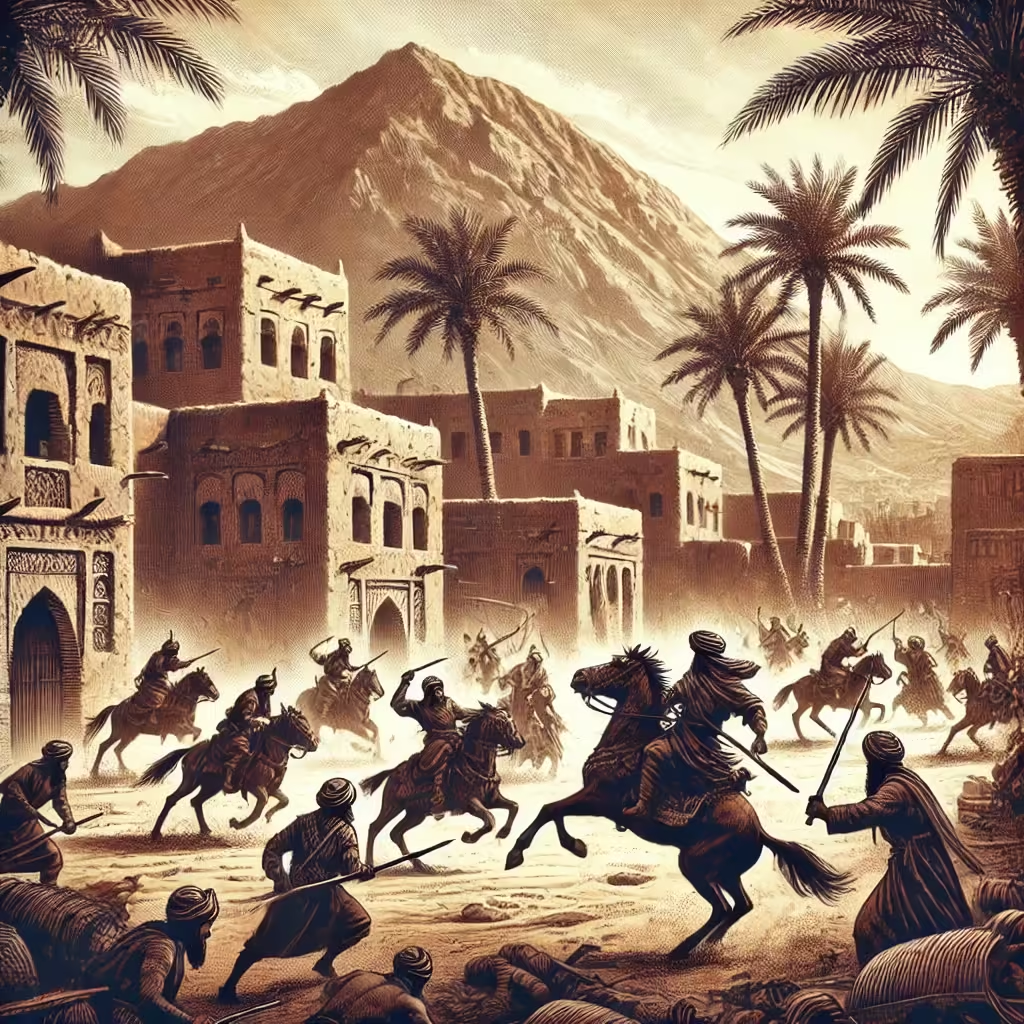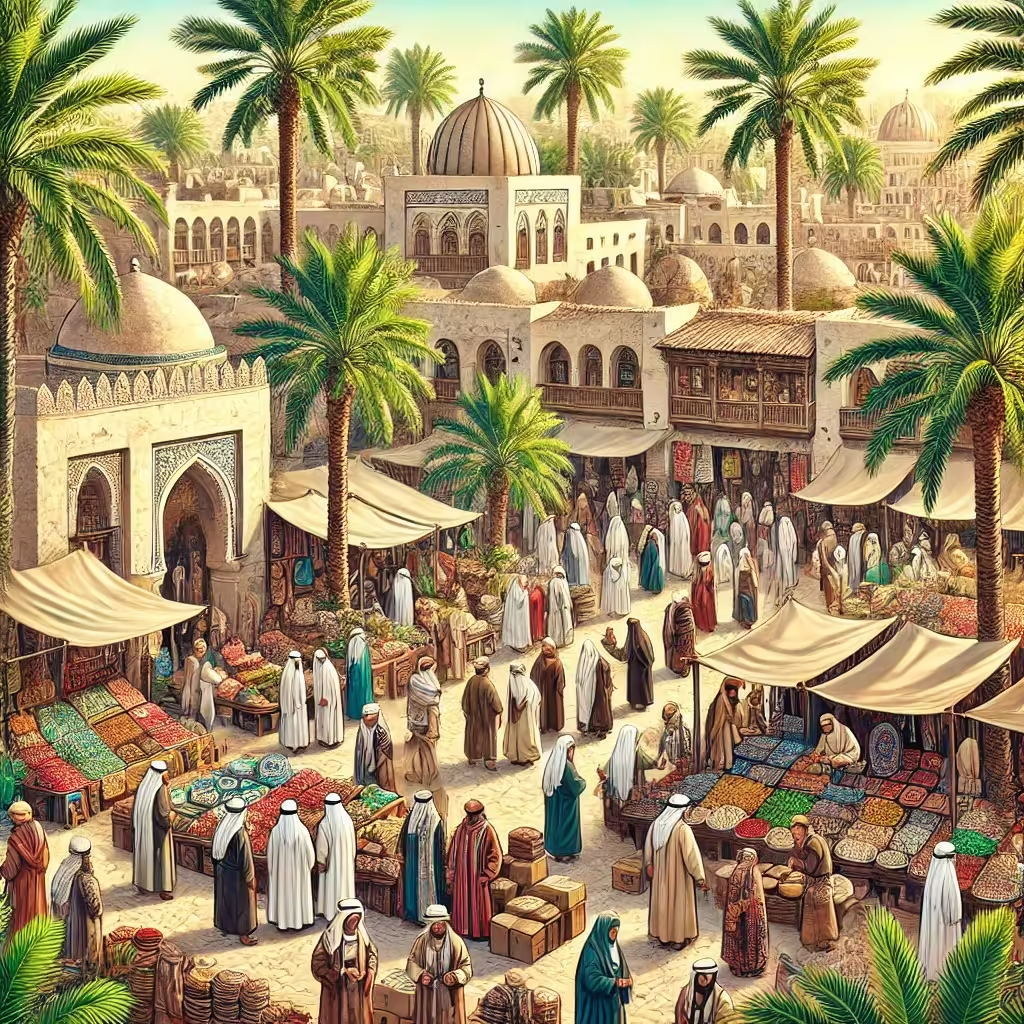Table of Contents
Introduction
This is the third part in a series of articles on “Lessons from the Hijrah“. You can click here to read the full series, ALLAH willing.
In this article, we address the following questions:
- Is it true that Islam cannot thrive without a state?
- Why were the Companions distinguished by the standard of the Hijrah (migration), being called Muhajirun (Emigrants) and Ansar (Helpers)?
- Do people follow the religion of their rulers, or is it that the rulers reflect the state of the people themselves?
The Necessity of a State for Islam
We’ve previously discussed the importance of having a state for any ideology or message to take root and flourish. Every individual with a vision or mission requires a state to realize their goals, as a state can serve as both a powerful tool for either corruption or reform. Prophet Muhammad (Peace be upon Him) dedicated the Meccan period to the search for such a state, following a strategy we covered in a prior article.
In this context, we now turn our attention to how Islam, in particular, requires a state in order to thrive. Islam, as a comprehensive way of life, needs the support of a state to fully manifest. This is evident in the actions of the Companions, may ALLAH be pleased with them, especially Umar, when they decided to mark the beginning of the Islamic calendar from the Hijrah. The Hijrah represents the most significant event in Islamic history—the birth of the Islamic nation, the establishment of the Islamic state, and, ultimately, the foundation of Islamic civilization.
The Hijrah’s Powerful Message
One of the most significant lessons from the Hijrah is that Prophet Muhammad (Peace be upon Him) was far more than just a preacher. If His role had been limited to preaching, there would have been no need for migration. The Prophet was not only a spiritual guide but also a leader with a comprehensive message. He served as a leader, ruler, chief, commander, judge, mufti, and warrior, actively implementing Sharia and its rulings.
This is further demonstrated by the events following His arrival in Medinah. The Prophet did not simply settle into a role as a preacher with the freedom to speak openly. At that time, Medinah was preparing to crown Abdullah ibn Ubayy ibn Salul as their king. Following the Battle of Bu’ath, which caused many losses, the people had agreed to make Abdullah their leader, just before the Prophet’s arrival and before the Ansar accepted Islam.

Had the Prophet (Peace be upon Him) been merely a preacher, He could have sought asylum in Medinah, asking only for the freedom to speak and spread His message. However, this was not the case. The Prophet (Peace be upon Him) entered Medinah as a ruler, establishing a new system of governance and drafting the Constitution of Medinah. In this constitution, He was recognized as the ultimate authority. The document clearly stated:
“…And if any dispute or disagreement arises among the people of this document, which could cause harm, it must be referred back to ALLAH and Muhammad, the Messenger of ALLAH…“
The Prophet (Peace be upon Him) did not arrive in Medinah as a refugee preacher; He came as a ruler. He founded a political system and refused to live under the existing pre-Islamic (jahiliyya) political order.
The Impact on Muslim Identity
One of the key aspects of the Hijrah, when you reflect on it, is how it led to the division of the Prophet’s Companions into two distinct groups: the Muhajirun (Emigrants) and the Ansar (helpers). What defined the Muhajirun as emigrants and the Ansar as helpers? It was the Hijrah itself. The Muhajirun left behind their lands, homes, and wealth, while the Ansar opened their doors, providing shelter and support, becoming the hosts and the destination for those who had migrated.
The Importance of Islamic Governance
To grasp the critical significance of statehood, we can reflect on the determined efforts of Islam’s enemies to prevent the establishment of a Muslim state. Consider the Quraysh—these were people who had tortured and persecuted the Muslims, individuals who had left their religion and simply wanted to depart. So, why did the Quraysh refuse to let them go? Because they understood that if the Muslims were allowed to leave, it would result in the formation of a Muslim state. This was a red line that neither the forces of jahiliyya nor the enemies of Islam were willing to let be crossed.
From the time of the Hijrah until today, we continue to witness how the global powers and nations hostile to Islam have devoted immense resources—deploying armies, planes, and ships—all in a bid to prevent Muslims from establishing a state and to stop Islamists from attaining positions of power and authority.
The Challenges of Medinah
Looking at the situation in Medinah, we can see that it was incredibly challenging. Medinah was divided along religious lines, with Muslims, Jews, and polytheists all coexisting. There were also tribal divisions: within the city, the Aws and Khazraj tribes existed alongside the Muslims who had migrated from Mecca and other places, as the Hijrah was obligatory for Muslims.

Economically, the situation was dire, with the Jewish community holding significant control over the local economy. Even the health situation was concerning, as many of the Muslims who had migrated to Medina struggled to adjust to its climate and began to fall ill. Furthermore, as mentioned earlier, a new political system was on the verge of being established.
If the issue of statehood were not crucial, the Prophet (Peace be upon Him) could have delayed it or refrained from pursuing it under such difficult conditions. However, His determination to establish a state, even amid these challenges, underscores the significance and necessity of statehood for Islam. This insistence demonstrates that Islam cannot truly flourish without a state to support it. Grasping this concept profoundly shapes our understanding of the present-day realities and the solutions we strive for in addressing the challenges of our time.
Conclusion
In Part Four, ALLAH willing, we will continue by addressing the following thought-provoking questions:
- How did the Prophet (Peace be upon Him) first learn that He would migrate?
- How was the news of the Hijrah known even before the Prophet (Peace be upon Him) Himself became aware of it?
- Who were the individuals who aligned their political affairs and migration plans with the Prophet’s Hijrah before He had even embarked on it?
We will explore these questions in detail, offering insights and reflections.
Sources:
Mohamed Elhamy. دروس الهجرة | 3. لماذا لم يقبل النبي ﷺ بالرئيس التوافقي؟ | محمد إلهامي. YouTube Video.

